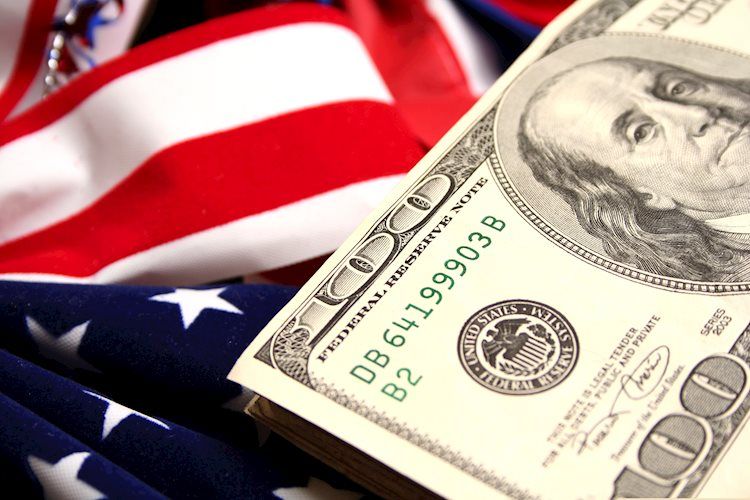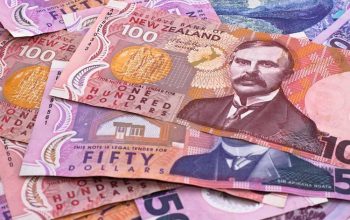- Weak labor data led to a decline in the US Dollar during Thursday session.
- Initial Jobless Claims remained at 230K, indicating a persistent labor market.
- PPI fell short of expectations, signaling a potential easing of inflation, which also added to the USD’s downside.
The US Dollar Index, which measures the value of the USD against a basket of six currencies, is posting daily losses after soft labor and inflation data.
Despite positive economic indicators, current market valuations may be overly optimistic. Recent data reveals that the US economy remains robust, expanding at a rate exceeding expectations.
Daily digest market movers: DXY down after inflation and labor data
- The US Dollar declined against its major rivals amid dovish signals from the latest US labor market and inflation reports.
- Initial Jobless Claims, a proxy for layoffs in the US, increased to 230K in the week ended September 7, matching estimates and slightly above the prior week’s upwardly revised 228K.
- The advance seasonally-adjusted insured unemployment rate remained unchanged at 1.2%, and the 4-week moving average rose to 230.75K.
- The Producer Price Index (PPI) for final demand in the US rose 2.2% YoY in July, below the 2.3% market forecast and the previous 2.7% increase.
- The annual core PPI rose 2.4%, missing the 2.7% consensus estimate. On a monthly basis, the PPI increased 0.1%, while the core PPI remained flat.
- The CME FedWatch tool indicates a 13% probability of the Fed cutting interest rates by 50 basis points in September, unchanged from before the PPI release.
- These reports suggest that the US labor market remains resilient despite economic headwinds, while inflation pressures may be moderating, supporting the Fed’s dovish stance.
DXY technical outlook: DXY resumes downside, breakout improves outlook
Technical analysis indicators for the DXY index have resumed their downward trend in negative territory. However, on Tuesday, the index regained the 20-day Simple Moving Average (SMA) at approximately 101.60. This breakout has improved the short-term outlook, and the immediate task for buyers is to hold this level.The Relative Strength Index (RSI) and Moving Average Convergence Divergence (MACD) indicators remain in negative territory, suggesting bearish momentum. However, both indicators are showing some signs of upward movement, which could indicate a potential reversal in trend.
Supports are located at 101.60, 101.30 and 101.00. Resistances are found at 101.80, 102.00 and 102.30.
US Dollar FAQs
The US Dollar (USD) is the official currency of the United States of America, and the ‘de facto’ currency of a significant number of other countries where it is found in circulation alongside local notes. It is the most heavily traded currency in the world, accounting for over 88% of all global foreign exchange turnover, or an average of $6.6 trillion in transactions per day, according to data from 2022. Following the second world war, the USD took over from the British Pound as the world’s reserve currency. For most of its history, the US Dollar was backed by Gold, until the Bretton Woods Agreement in 1971 when the Gold Standard went away.
The most important single factor impacting on the value of the US Dollar is monetary policy, which is shaped by the Federal Reserve (Fed). The Fed has two mandates: to achieve price stability (control inflation) and foster full employment. Its primary tool to achieve these two goals is by adjusting interest rates. When prices are rising too quickly and inflation is above the Fed’s 2% target, the Fed will raise rates, which helps the USD value. When inflation falls below 2% or the Unemployment Rate is too high, the Fed may lower interest rates, which weighs on the Greenback.
In extreme situations, the Federal Reserve can also print more Dollars and enact quantitative easing (QE). QE is the process by which the Fed substantially increases the flow of credit in a stuck financial system. It is a non-standard policy measure used when credit has dried up because banks will not lend to each other (out of the fear of counterparty default). It is a last resort when simply lowering interest rates is unlikely to achieve the necessary result. It was the Fed’s weapon of choice to combat the credit crunch that occurred during the Great Financial Crisis in 2008. It involves the Fed printing more Dollars and using them to buy US government bonds predominantly from financial institutions. QE usually leads to a weaker US Dollar.
Quantitative tightening (QT) is the reverse process whereby the Federal Reserve stops buying bonds from financial institutions and does not reinvest the principal from the bonds it holds maturing in new purchases. It is usually positive for the US Dollar.



